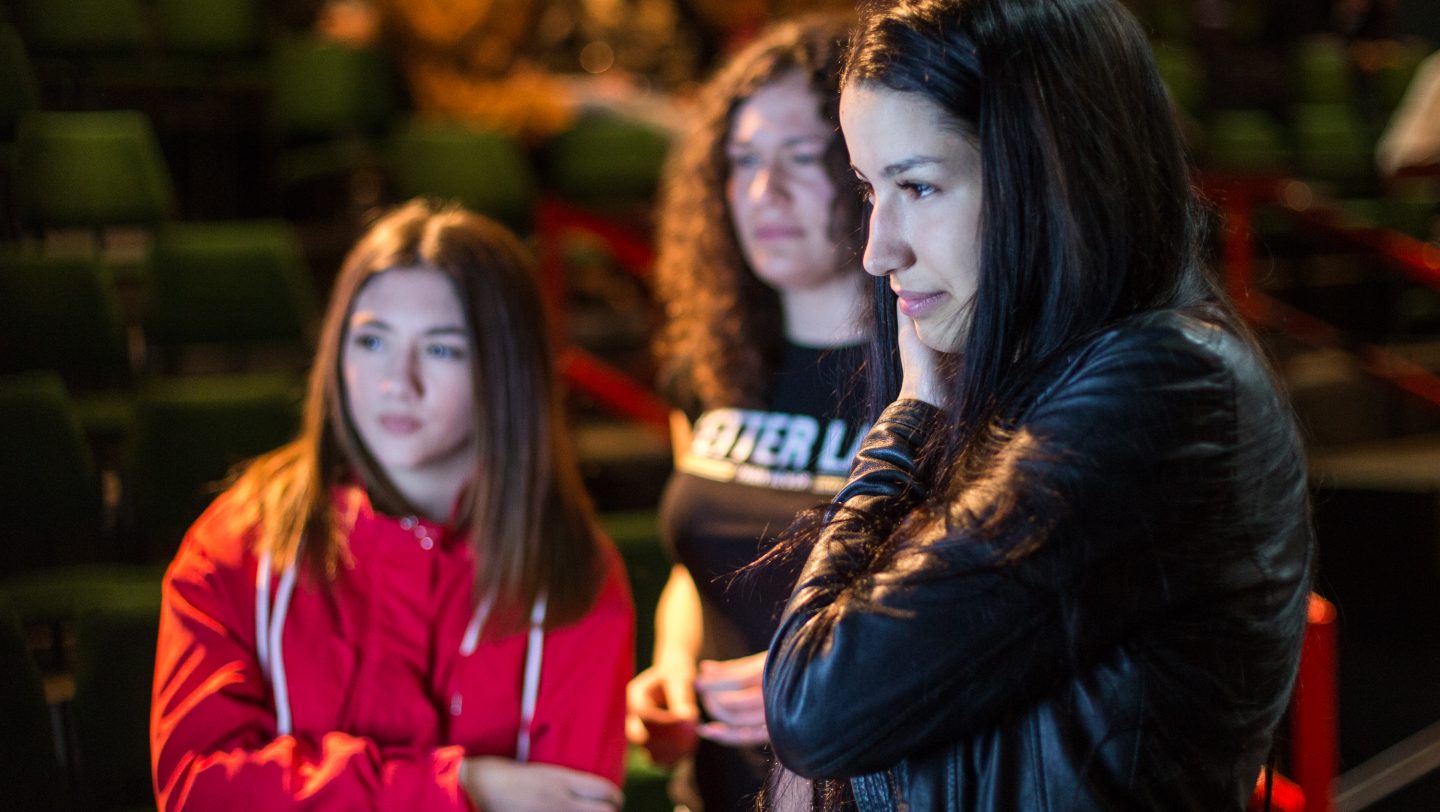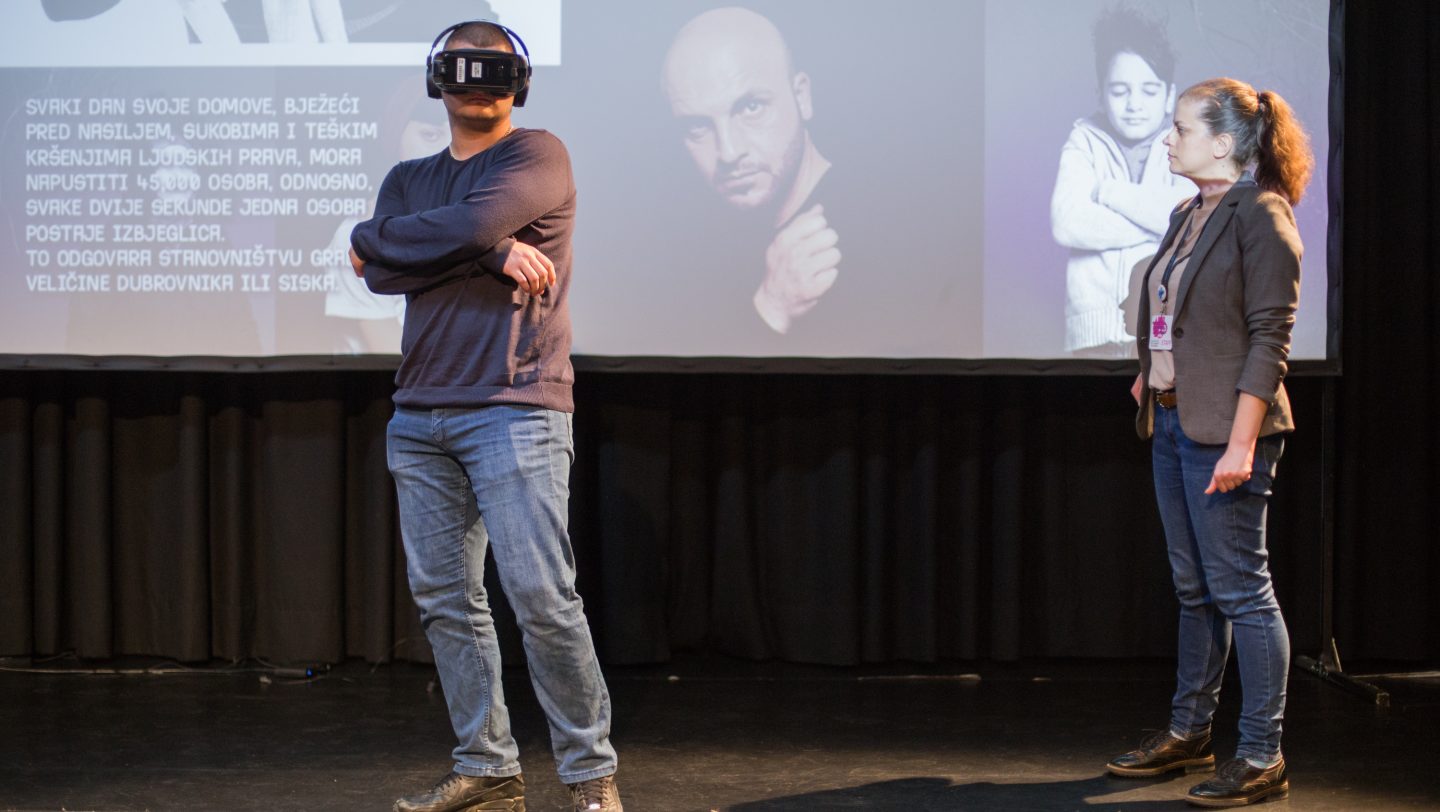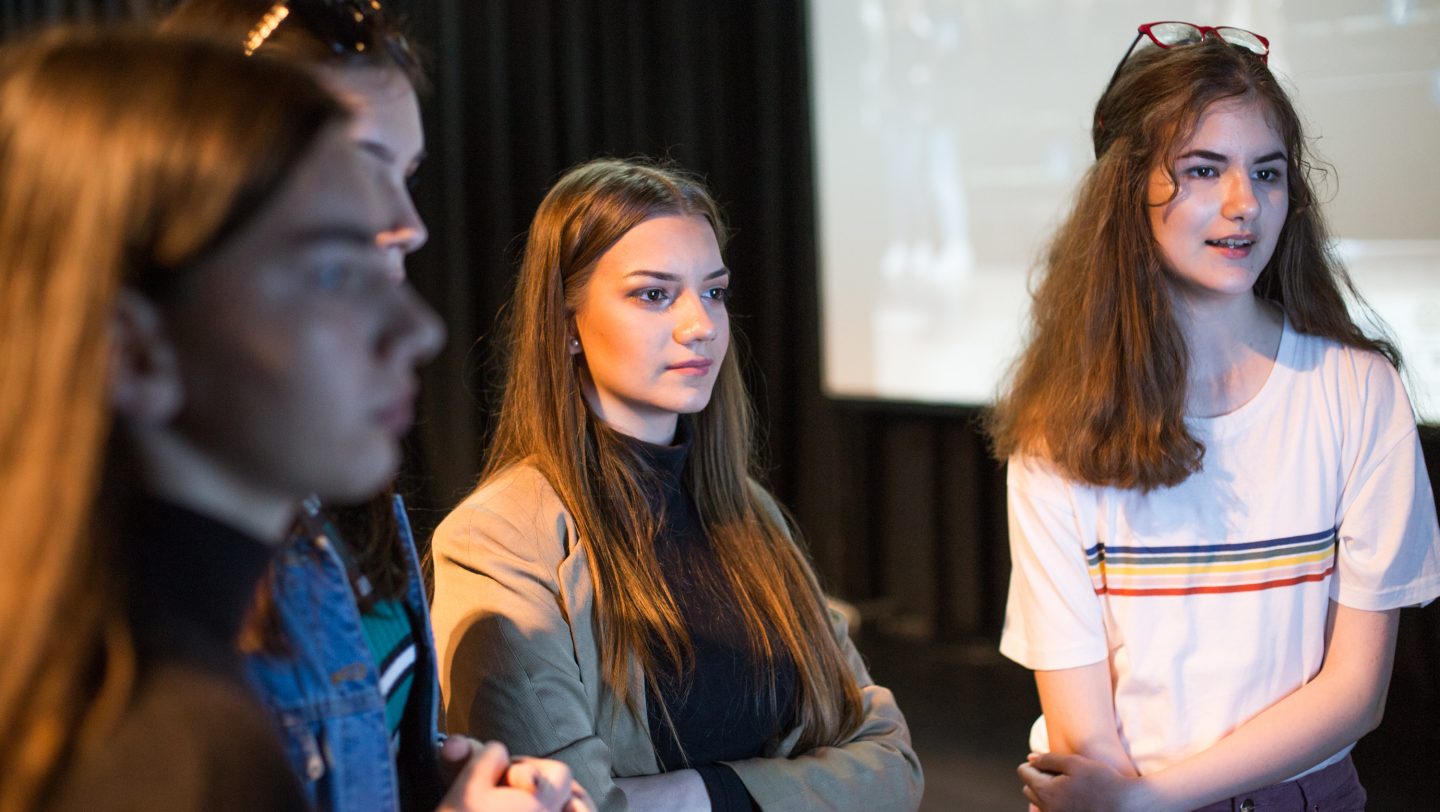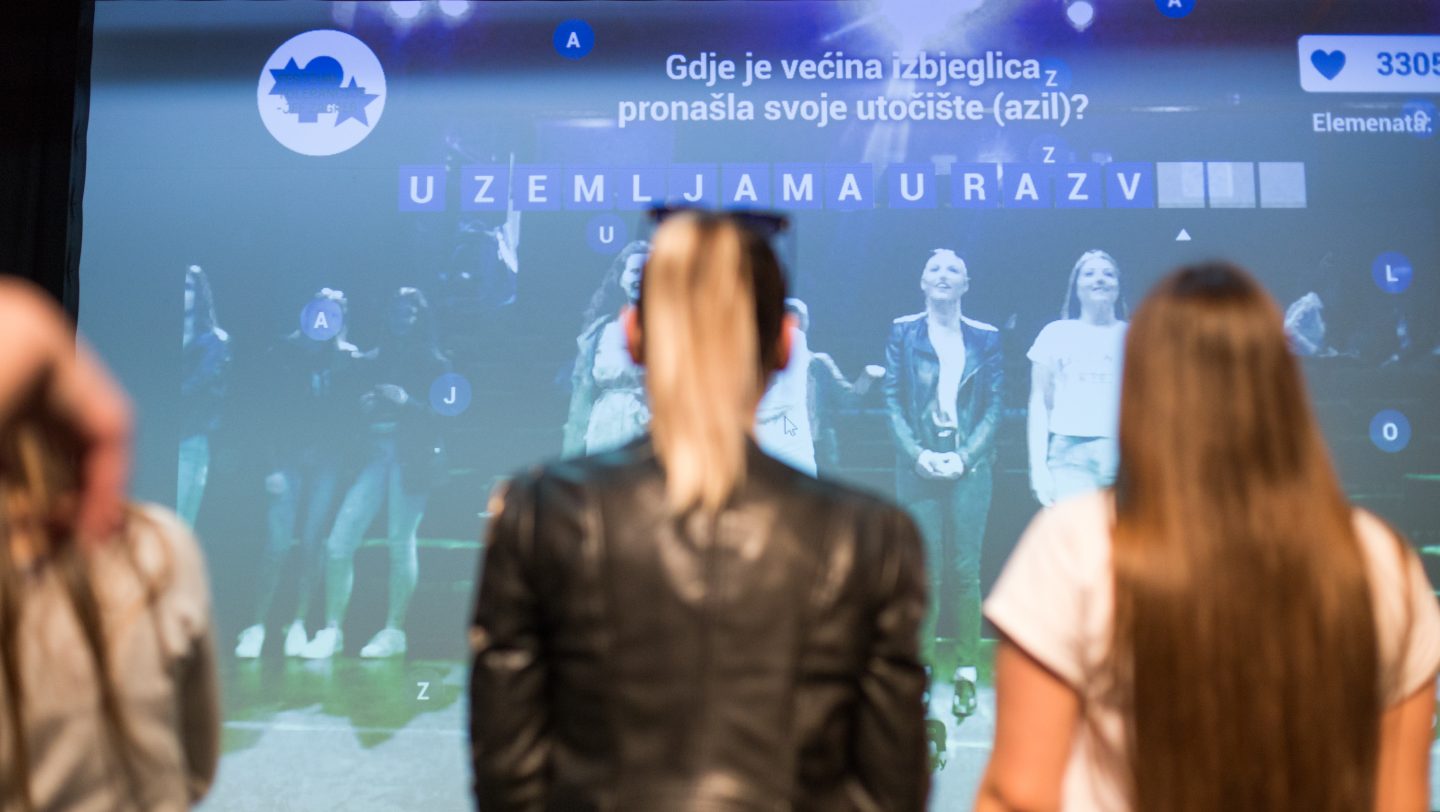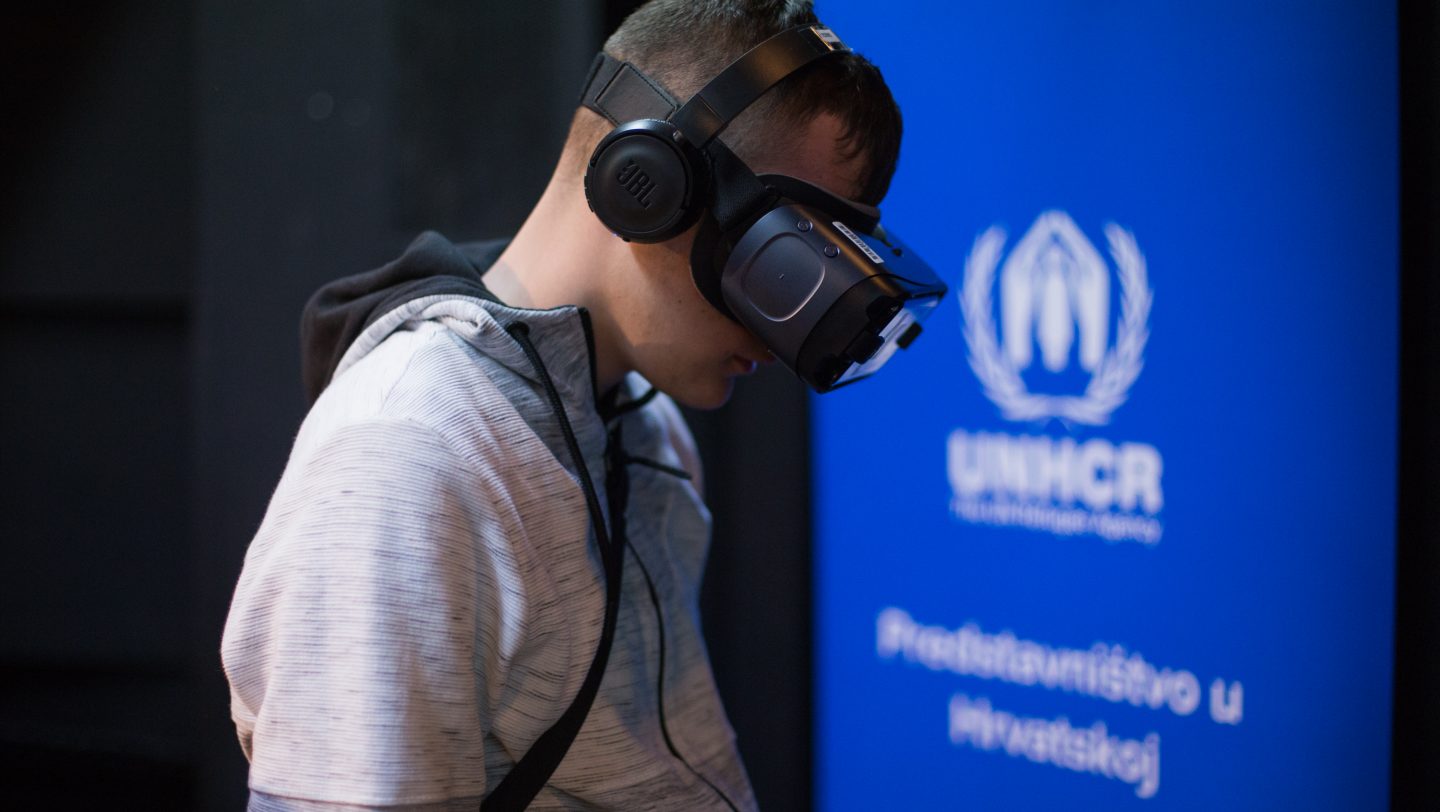Croatian students can virtually walk in the shoes of refugees
UNHCR supplies virtual reality goggles to give Croatian teenagers a 3D experience of life in a refugee camp.
In the half-light of a cinema, Croatian teenagers are stumbling around, wearing virtual reality goggles. When they take the headsets off, there are exclamations of “Wow!” and “that was amazing!”
They have been watching “Clouds over Sidra”, a 3D movie that not only tells the story of a Syrian girl in a refugee camp in Jordan but also allows viewers to feel as if they are right there with her.
“It was strange,” says Doroteja, 18, a student of the Ekonomska škola (technical high school) in the city of Vukovar. “I saw people in the desert; poor people in need. I don’t know much about refugees. I don’t usually follow the news but I might be more interested now.”
Over the course of a week, this virtual reality experience was given to some 300 school students in conjunction with Zagreb’s annual film “Festival of Tolerance”. UNHCR, one of the partners in making “Clouds over Sidra” in 2015, supplied the virtual reality equipment so the youngsters could see it in all its 360-degree glory.
“We believe it is very important to engage with young people,” says UNHCR’s representative for Central Europe, Montserrat Feixas Vihe. “We want young audiences to feel that refugees are no different from any other children on the planet.”
The Festival of Tolerance (FOT) and speakers from UNHCR regularly tour schools all over Croatia with films and talks to help pupils understand what it is like to be a refugee.
It is always very rewarding. You see in the children’s eyes the moment when they get it.
Giving moral leadership to the year-round schools programme is Croatian-born Hollywood producer Branko Lustig, who won Oscars for Schindler’s List and Gladiator. As a Holocaust survivor, he knows very well where intolerance can lead.
The FOT started as a Jewish film festival but has now widened to cover a range of human rights topics, including refugees. The schools programme has a powerful effect on young Croatians, who may have seen refugees on TV during the 2015 crisis but know little about them.
“It is always very rewarding,” says Katarina Juras, FOT’s Head of Development of Cultural and Educational Activities. “You see in the children’s eyes the moment when they get it.”
Sometimes young refugees come in person to speak to the school students. At a recent film show in the former Croatian capital of Varaždin, a young Iraqi refugee addressed pupils.
After describing his journey from the Middle East to Europe, he fielded questions on the subject closest to many Croatians’ hearts — football. The youngsters whooped with delight when he said he was both as sad and as proud as they were when Croatia came second in the World Cup in 2018, and at the end they gave him a standing ovation.
There are no refugee guests at the virtual reality showings but the school students from Vukovar, a city that was itself engulfed in war in the 1990s, get a strong sense of the refugee experience, thanks to the high-tech equipment.
At the age of 63, I am wearing virtual reality goggles for the first time to watch young Sidra going about her daily life in the Za’atari refugee camp. It feels as if I could reach out and touch her. When I take the headgear off, I am in tears.
Nemanja, 16, is blasé about virtual reality, as he has a headset at home to watch horror films and animated games but the subject of refugees is relatively new to him.
We talk about it in class. They are interested because Vukovar had its own experience, but they definitely do not know enough about refugees.
“I saw five refugees in a tent in the park (in Vukovar in 2015),” he says. “I was kinda shocked. I feel very sorry, ’cos it’s not fair all these people have to leave their homes, and unfortunately I can’t help much.”
David, 16, another Vukovar student, is perhaps better informed than the average young Croatian about refugees but he learnt something new at the virtual reality event.
“From what I saw in 2015, and from TV, I had the impression that there were lots of refugees,” he says. “In fact, as I learnt, only about 750 refugees have stayed here (760 granted international protection since 2004). I think our system could take more and people in Croatia would be willing to help.”
Ksenija Jovičić, who teaches legal subjects including human rights at the Ekonomska škola, says her students are likely to be sympathetic to refugees because almost everyone in Vukovar knows someone who was displaced during Croatia’s war of independence (1991-1995).
“We talk about it in class. They are interested because Vukovar had its own experience, but they definitely do not know enough about refugees,” she says.
Ms. Jovičić adds that she overheard some students leaving the cinema telling the next group coming in that the film was “fantastic”.
“They are already impressed and truly affected. Now I will build on what they have seen when I am planning the next lessons.”
Share on Facebook Share on Twitter

